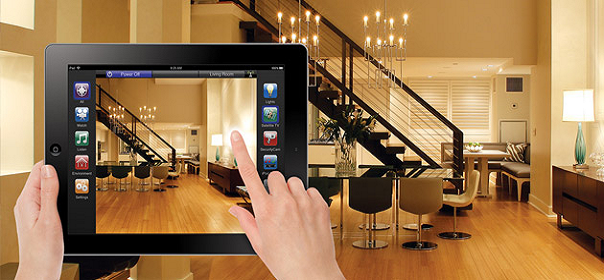Use lighting controls to automatically turn lights on and off as needed, and save energy. Of course you can save energy by turning off lights when they are not needed, but sometimes we forget or don’t notice that we’ve left them on.
Automation system scenario
Today’s best lighting automation systems rely on fixture-level occupancy sensing managed through software that detects and records data such as ambient light, occupancy, temperature and energy consumption. Profiles are stored in each fixture and dictate how the fixtures are controlled in various scenarios. Templates are customisable for myriad settings, such as a private office, conference rooms and bathrooms.
Sensors process and analyse conditions in real-time to adjust lighting to appropriate levels through a standard protocol for wireless communication between the sensor and a bridge to the IT Ethernet network. That network bridge supports fixture connection to a server-class appliance that discovers, commissions, and manages the sensors.
The server appliance can be integrated with third-party building automation and demand response systems. The functionality can be deployed as a network appliance or in a virtual-machine environment that uses a standard PC. Management of the server utilises a graphical user interface running in a Web browser with a data security protocol.
Integrating lighting and building systems
Sensor network collects real-time-occupancy, light, temperature and energy-consumption data at every fixture, which can be used for advanced control and automated demand response, and can be integrated with existing building management systems to maximise energy savings.
Sensors in every lighting fixture can be mapped to a zone controlled by a given thermostat, producing micro-zonal temperature and occupancy information that enriched the data set.
For example, if property managers get a message from its utility grid management office to make an energy reduction for a peak demand event, they can respond with high precision. From a central dashboard, light can be controlled over an individual workstation or a pair of lights in a private office.
Efficiency and savings
Efficiency and cost savings are unparalleled with this kind of automation. The system collects real-time data, such as if a specific bulb is burned out or if there is a need to dim a specific fixture or group of fixtures because of daylight harvesting. All of this data can be fixed or adjusted remotely via desktop or laptop.
With sensors and a network, managers can dial down energy usage to the absolute minimum. With completely adaptive fixtures, conditions can be monitored 24 hours a day, seven days a week, continuously controlling the light based on present conditions.
Adopting fixture-level control
Switching from a zone-level sensing and centralised control system to a fixture-level occupancy-sensing system that is managed wirelessly through computer software is quite simple and as easy as replacing a ballast. No pre-engineering design or rewiring is required, and each fixture is recognized by the system within seconds.
The return on investment to install such a system is dependent on several variables, but typically would include the cost of energy, projected efficiency savings and, of course, utility rebates. Most lighting control projects have paybacks anywhere from under 1 year to max. of 5 years depending on the size of the system.
Lighting automation is likely the most cost-efficient of all potential building-automation projects. In addition, automating the lighting system does not typically disrupt other improvements, such as HVAC installation or building operations. Automation not only saves energy costs and better protects the environment, but also can lead to increased employee morale and productivity.
A comprehensive system is customisable to each employee’s working space while using varying solutions.
Light quality
There is a light quality angle to lighting retrofits as well. Aged fluorescent fixtures can suffer up to 25% light degradation over their lifetime, which can lead to uninspiring lighting and a dull working environment.
Fixture-level occupancy sensors are not the only lighting and building automation solution. Other technology includes high-interval monitoring of energy data to maximise efficiency. Such interfaces collect and analyse a wide swath of data to drill-down on specific issues, such as why a particular space of a building is illuminated when it is not occupied at any given time.
For instance, while the traditional approach uses monthly data to find operational and equipment issues, including lighting, some newer systems crunch 3000 times more data to understand and evaluate building performance. Long gone are flat, one-dimensional displays. Instead, complex demand profiles use 3D (time vs. date vs. kW) pattern recognition and gradient colours to paint a detailed picture that is clear and easily communicated among management.
Such a solution can result in 25%-29% savings on energy bills just through occupant awareness and behavioural changes. The future is now for fixture-level occupancy sensing and smart software that creates energy efficiency and represents a solid return on investment.
At Anglo African, our automation solutions are based on intelligent installation system that meets the highest requirements for applications in modern home and building control. The simple and proven KNX technology (http://www.knx.org), is accepted as the world’s first open standard for the control of all types of intelligent buildings – industrial, commercial or residential. Our solutions are for new and existing buildings and is extendible/adaptable to new needs.

